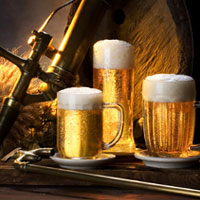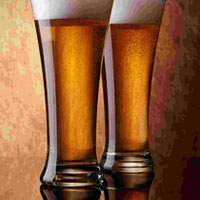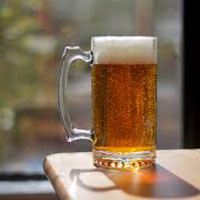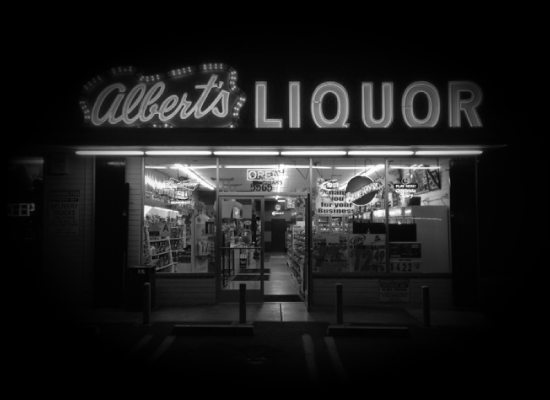The majority of craft-brewed beers are ales, and there are numerous styles within that category, including pale ales, brown ales, porters, stouts and hefeweizens. Ever wonder why some servers put a big wedge of lemon or orange on the rim of those cloudy looking wheat beers? The German-style hefeweizen, a beer brewed using wheat, was originally brewed using a European yeast strain that offered a citrusy breadiness to the beer. American brewers like Kurt and Rob Widmer, who brewed the original American-style hefeweizen, used typical craft brewer hops like Cascades, which gave a bigger citrus characteristic to the beer, and which actually goes well with a lemon on the rim. The general rule here is don’t add a lemon if you’re not drinking a Widmer Hefeweizen.
Brown ales, porters and stouts, while produced year round, can also be called seasonal beers brewed for fall and winter. These can offer a more robust taste experience through the use of roasted grains, more hops and higher alcohol content.
Beers
Explore the World of Craft Beer
Beer is grain, water, yeast and hops. The grain is heated in water and the starches converted to sugars. The resulting sugar water is eventually boiled to get rid of contaminants. At or near the end of the boil, hops, the flowers of a certain vine, are added to create a bitter balance to the sweetness leftover from the grains. This is then cooled and yeast is pitched and shaken to create a fermentation whereby the yeast digests the sugars and spits out alcohol. Each stage of this process creates different flavors. Grains can give off grassy, roasted or sweet flavors, while hops create bitter, floral and citrusy characteristics. Yeast provides earthy and bready flavors in some beer varieties, and the resulting alcohol adds certain characteristics like heat to the mixture.

Ales

Lagers
Lagers are bottom fermented as opposed to top-fermented ales. They often sit for a longer period of time than ales, which can go from production to bottle to shelf in a matter of weeks. Lagers are generally smoother than ales with fewer taste variations. If you currently drink Coors, Bud or Miller, you are already familiar with the lager family. There are many wonderful versions of craft brewed lagers, and they can make a great entry point if this is a style of beer you really like.

The Big Leagues of Beer
If you drink wine, think about India pale ales as the Zinfandels of the beer world. It’s a big, bold beer with nothing to hide, and which might actually overpower many other beers or food choices. India pale ales got their name and design when England colonized India and needed to make stronger beer that would last the long sea voyage around the horn of Africa. Additional hops were used along with a higher alcohol content to preserve the beer. A good West Coast IPA will be overbearing to someone who is used to the East Coast or even English-style versions of the beer. But the West Coast IPA, originally developed by brewers in Oregon, Washington and California, has certain attributes that come through when you familiarize yourself with the style. Flavors like grapefruit, pine and resin dominate, and strong floral scents often overwhelm the nose on this style of beer. The best advice anyone could give on learning all that the craft beer world has to offer is to simply recommend picking a point and jumping in. Running up the taste scale is not a bad way to educate your palate about beer, but you may jump in at any point along the way and find that you like the beer. The main point is to jump in somewhere!





